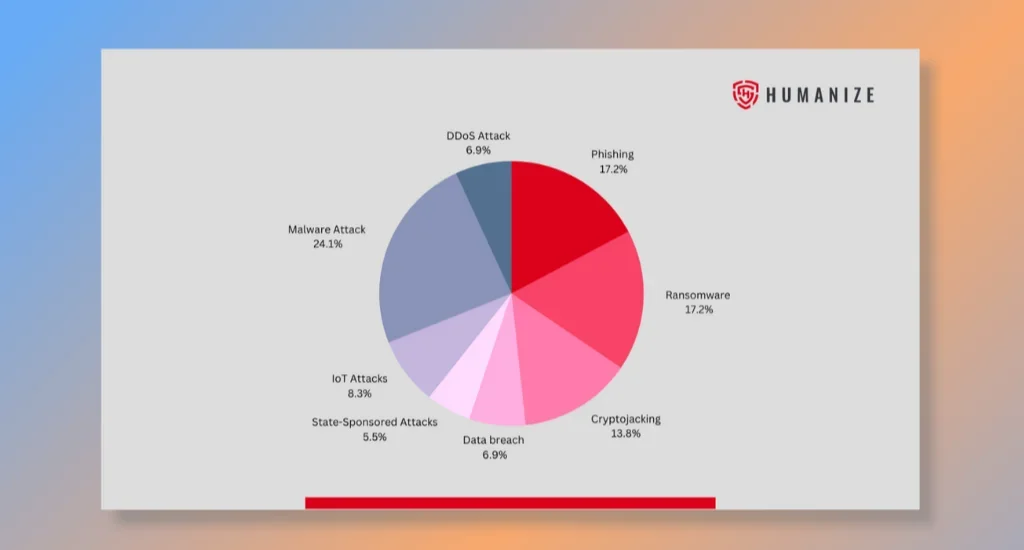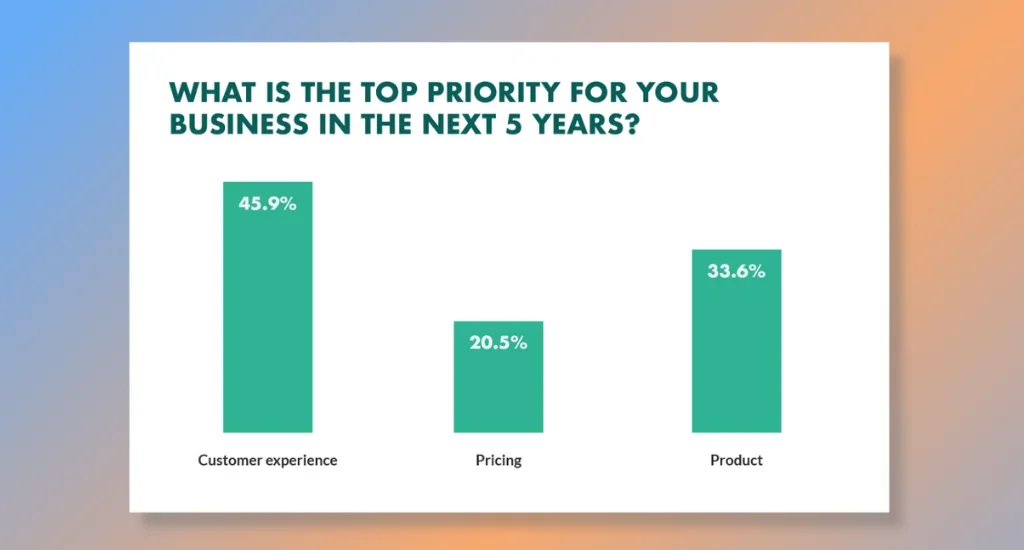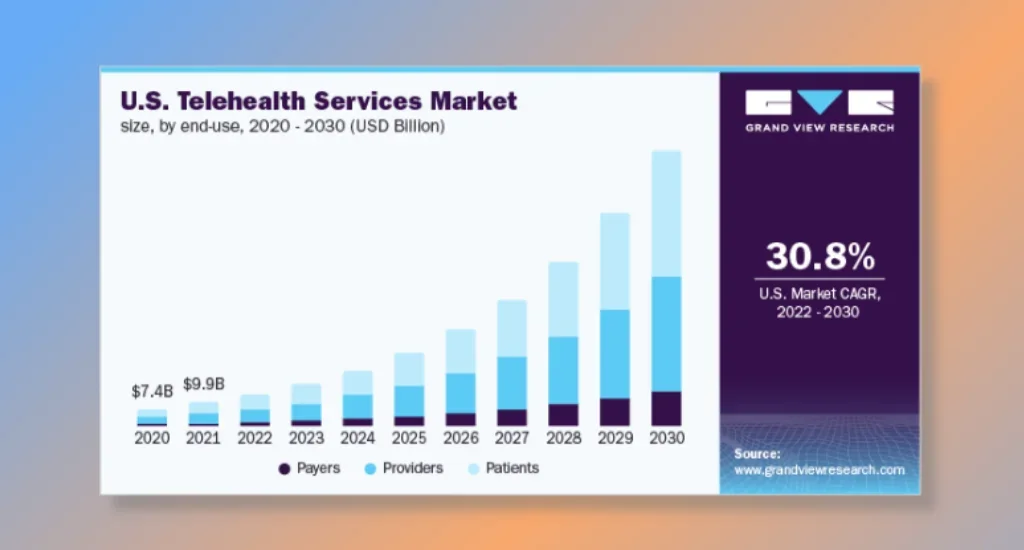The healthcare industry is increasingly embracing the SaaS medical trends, revolutionizing healthcare technology through the emergence of SaaS-based healthcare companies. Leveraging SaaS trends offers cost-effective solutions, remote accessibility, and swift integration, enhancing patient care and ensuring security. Embracing these trends means a leap toward efficient, collaborative healthcare services, shaping the industry's future.
Aloa, an expert in software outsourcing, specializes in assisting healthcare organizations in utilizing SaaS solutions to revolutionize medical practices. It's an evolving landscape encompassing electronic health records, telemedicine platforms, practice management systems, and AI-driven diagnostics. We stay at the forefront of these advancements, guiding healthcare entities to adopt innovative SaaS tools that enhance their medical services.
In this blog, we'll delve into the latest trends in SaaS medical technology for 2023. Offering clear examples, insightful statistics, and strategies to stay ahead of the curve, we aim to keep you informed and well-prepared in the dynamic landscape of healthcare SaaS.
Afterward, you'll discover invaluable insights to thrive in the dynamic SaaS medical space. Stay ahead and leverage these trends to benefit from innovative solutions and transformative opportunities that drive healthcare excellence.
Let’s jump in!
What is SaaS Medical Technology?
SaaS medical technology empowers healthcare by offering scalability, cost-effectiveness, and heightened security to healthcare providers. This innovation streamlines administrative tasks, fosters smooth data sharing, and significantly enhances the quality of patient care. Its accessibility benefits patients and providers, optimizing efficiency and reducing overall costs.
Moreover, the adaptability of SaaS medical solutions enables seamless integration with existing healthcare systems, ensuring a smooth transition and minimal disruption. This flexibility allows healthcare providers to efficiently incorporate innovative technologies, optimizing workflows and improving overall patient outcomes.
Top 7 SaaS Medical Industry Trends to Watch Out in 2024
Staying ahead in medical tech is crucial for better healthcare. In 2024, Software as a Service (SaaS) in the medical field is set for significant breakthroughs. Let's dive into the major trends and changes expected to transform healthcare tech this year.
Trend 1: Cybersecurity
Cybersecurity is a crucial trend in SaaS for the medical industry, ensuring data safety and patient confidentiality. Essential services include robust encryption, stringent access controls, and threat detection systems. Advanced cybersecurity builds trust among patients and healthcare providers, creating a secure space for using medical SaaS solutions.
Its impact on the SaaS medical industry lies in its ability to prevent security concerns such as data breaches, unauthorized access to patient records, and potential system compromises. Robust security measures, including advanced technologies like natural language processing, serve as a shield for safeguarding sensitive medical data against cyber threats.
According to Humanize, in 2023, malware attacks led to 24.1%, with phishing and ransomware close behind at 17.2% each, and crypto-jacking accounts for 13.8%. This data underscores the critical need for robust cybersecurity measures to combat these prominent potential threats in digital environments in the healthcare sector in 2024.

Embracing robust security measures is pivotal in advancing the industry and providing safe, efficient patient care. Strong cybersecurity in the SaaS medical industry benefits by:
- Protecting Patient Data: Safeguarding sensitive medical information with stringent security features to uphold patient confidentiality.
- Building Trust: Establishes confidence among patients and providers using healthcare SaaS solutions.
- Ensuring Reliability: Guarantees the secure functioning of medical systems, promoting reliable healthcare services.
How do Saas Medical Technologies Handle Cybersecurity Issues?
SaaS medical technologies aim to provide a secure environment for handling sensitive patient data and maintaining confidentiality, integrity, and availability of information. They address security issues through several measures:
- Encryption: Data encryption is a fundamental security measure. SaaS medical platforms encrypt sensitive data both in transit and at rest, ensuring the information remains unreadable even if intercepted without proper decryption keys.
- Access Controls: Strict access controls are implemented to regulate who can access what data. Role-based access ensures that only authorized personnel can view or modify specific information.
- Regular Audits and Compliance: These platforms often undergo frequent security audits and adhere to industry-specific compliance standards like HIPAA (Health Insurance Portability and Accountability Act) in the healthcare sector. Compliance ensures that security measures are current and in line with industry standards.
- Data Backup and Recovery: Robust backup systems are in place to prevent data loss in case of security breaches or system failures. This includes redundant data storage in multiple secure locations and effective recovery procedures.
- Firewalls and Intrusion Detection Systems (IDS): Advanced firewalls and IDS are employed to monitor and prevent unauthorized access and malicious activities within the system.
Considerations for Implementing Cybersecurity
Implementing cybersecurity in the SaaS medical industry requires a comprehensive approach encompassing robust encryption, strict access controls, and proactive threat detection. Prioritizing regular updates and staff training ensures ongoing protection of sensitive medical data, fostering a secure environment essential for reliable healthcare services.
Trend 2: AI Integration
Artificial Intelligence (AI) integration in SaaS medical solutions revolutionizes by improving patient care, operational efficiency, and decision-making. Services like AI-powered telemedicine, predictive analytics, automated documentation, and intelligent diagnostics enhance patient outcomes and streamline workflows in healthcare facilities.
The integration of AI within healthcare SaaS platforms enables predictive analytics for personalized treatment plans, automates administrative tasks, streamlines diagnostics through image recognition, and offers real-time data analysis for quicker, more accurate insights.
Based on All the Research’s report, the global AI in the healthcare market is set to reach USD 36,250 million by 2026, with a 51.7% CAGR driven by AI's impact on patient outcomes. This growth stems from increased coordination between healthcare providers and patients and the growing importance of big data in healthcare, shaping advancements in SaaS medical solutions.

AI integration in SaaS medical solutions elevates patient care and optimizes operational workflows, improving healthcare outcomes. It offers three essential benefits:
- Enhanced Patient Care: Through predictive analytics and intelligent diagnostics, AI improves treatment precision, enabling personalized care plans and early disease detection.
- Operational Efficiency: Automating administrative tasks and streamlined workflows reduces manual workload, allowing healthcare professionals to focus more on patient care.
- Data-Driven Decision-Making: Real-time analysis of vast healthcare datasets empowers informed decision-making, facilitating better diagnoses and treatment strategies.
Considerations for Implementing AI Integration
AI integration in SaaS medical solutions demands attention to data privacy, regulatory compliance, and seamless system interoperability. Robust data protection, adherence to healthcare regulations such as HIPAA, and compatibility with diverse IT infrastructures are essential for the ethical and effective deployment of AI-driven solutions.
Trend 3: Customer Experience
Customer experience in SaaS medical is dominant, offering intuitive interfaces, personalized treatments, telemedicine integration, and responsive support. It enhances software quality, fostering trust in healthcare tech.
By prioritizing healthcare providers' and patients' needs and experiences, healthcare SaaS companies customize their services to ensure seamless usability, personalized interactions, and efficient solutions. This customer-centric approach, including responsive customer service, enhances user satisfaction and improves health outcomes.
According to the SuperOffice survey, most businesses (45.9%) prioritize "customer experience" over "product" (33.6%) and "pricing" (20.5%) in the upcoming five years. This signals a shift towards enhancing the patient and provider experience, highlighting the healthcare industry's recognition of the importance of seamless user experiences for a competitive edge.

Emphasizing a customer-centric approach in SaaS medical boosts adoption and engagement and confers a competitive advantage, ultimately enhancing the industry's overall efficiency and effectiveness. Prioritizing customer experience in SaaS medical offers three essential benefits:
- Enhanced Adoption: Improved user experiences drive better adoption rates among healthcare providers, facilitating quicker integration and utilization of innovative medical technologies.
- Improved Engagement: Focusing on customer experience fosters deeper engagement between patients, providers, and the software, leading to more meaningful interactions and increased trust in medical solutions.
- Competitive Edge: Providing superior user experiences sets healthcare institutes apart in a crowded market, attracting and retaining clients by offering intuitive, user-friendly, and impactful solutions.
Considerations for Implementing Customer Experience
In SaaS medical, customer experience demands understanding diverse user needs, tailoring solutions for intuitive interfaces, personalized care, seamless integration, and responsive support. Moreover, continuous feedback loops and agile adaptation are crucial to ensure ongoing alignment with evolving user expectations and industry standards.
Trend 4: Market Diversification
Diversifying the SaaS medical market entails broadening service offerings beyond traditional healthcare software. This expansion involves venturing into telemedicine platforms, patient engagement tools, AI diagnostics, and personalized healthcare solutions through the SaaS model.
This diversification benefits the industry by catering to evolving patient needs, improving healthcare accessibility, and enhancing operational efficiencies for healthcare providers. This expansion allows SaaS medical companies to meet a more comprehensive healthcare demand while driving innovation and improving overall healthcare outcomes.
Based on the Grand View Research report, the global healthcare Software as a Service (SaaS) market reached USD 12.5 billion in 2020 and is projected to grow at a compound annual growth rate (CAGR) of 19.5% from 2021 to 2028. This growth is primarily driven by the increasing adoption of cloud technologies and the ongoing digitalization in healthcare.

Market diversification significantly enriches the SaaS medical landscape by offering tailored solutions, meeting evolving needs, and driving innovation, ultimately improving healthcare outcomes. This trend is substantial due to:
- Expanded Service Offerings: Market diversification broadens the scope of SaaS medical solutions beyond traditional software, offering innovations like telemedicine platforms, AI-driven diagnostics, and personalized healthcare tools.
- Meeting Evolving Patient Needs: Diversification allows for tailored solutions that cater to changing patient requirements, enhancing accessibility and engagement in healthcare.
- Driving Innovation and Competitive Edge: It fosters innovation within the industry, spurring competition and pushing for continuous advancements in healthcare technology.
Considerations for Implementing Market Diversification
In the SaaS medical industry, thorough market research, strategic product development, scalability, healthcare collaboration, regulatory compliance, robust cybersecurity, and effective user/stakeholder communication and training are essential for successfully integrating and adopting diversified solutions.
Trend 5: Telehealth Services
Telehealth services in SaaS medical solutions have become a pivotal trend, reshaping healthcare delivery. These services offer virtual doctor visits, remote vital sign monitoring, telepsychiatry, and teletherapy, drastically enhancing accessibility, efficiency, and patient outcomes while cutting in-person visit needs and costs.
This advancement benefits the industry by facilitating remote patient consultations, overcoming geographical barriers, and enhancing access to care. It dramatically improves access to healthcare services, particularly for individuals in remote or rural locations, while enabling more accessible communication between patients and healthcare providers.
The Grand View research report highlights the rapid expansion of telehealth services, which has been a driving force behind the increased demand for SaaS medical solutions, reflecting the projected growth at a CAGR of 30.4% from 2022 to 2030 in the global market valued at USD 26.4 billion in 2021.

These critical benefits underscore the transformative impact of telehealth services on SaaS medical solutions, revolutionizing healthcare delivery for more inclusive, proactive, and efficient information systems:
- Enhanced Accessibility: Telehealth widens the reach of SaaS medical solutions by breaking geographical barriers. Patients can access healthcare remotely, bridging gaps in care for those in rural or underserved areas.
- Remote Patient Monitoring: Telehealth empowers continuous monitoring through SaaS platforms, enabling healthcare providers to track patient vitals and progress from a distance. This real-time data facilitates proactive intervention and personalized care.
- Streamlined Healthcare Delivery: SaaS-based telehealth optimizes healthcare workflows, enabling seamless communication between medical professionals and patients. It also facilitates appointments, prescriptions, and consultations, improving overall efficiency.
Types of TeleHealth Services In Line with Implementation of Saas Medical Solutions
These telehealth services, empowered by SaaS medical technology, enhance accessibility, convenience, and quality of healthcare delivery, fostering better patient outcomes and expanding healthcare access to remote or underserved populations:
- Virtual Consultations: SaaS-based telehealth platforms enable real-time video consultations between healthcare providers and patients. These solutions facilitate remote diagnosis, treatment, and monitoring of various health conditions.
- Remote Monitoring: Utilizing IoT devices and SaaS technology, healthcare providers can remotely monitor patients' vital signs, health metrics, and adherence to treatment plans. This continuous monitoring helps in proactive intervention and personalized care.
- E-Prescriptions and Digital Health Records: SaaS-enabled telehealth services streamline the creation and management of electronic prescriptions and health records. This ensures accurate, accessible, and updated patient information for healthcare providers.
- Telemedicine Platforms: SaaS-based telemedicine platforms offer comprehensive solutions that integrate video consultations, patient data management, scheduling, billing, and secure communication—all in one system for efficient telehealth delivery.
Considerations for Implementing Telehealth Services
When implementing telehealth services in SaaS medical solutions, robust cybersecurity measures become imperative to safeguard patient data and ensure compliance with privacy regulations such as HIPAA. Seamless integration, user-friendly interfaces, and thorough staff training are essential for successful implementation.
Trend 6: Internet of Medical Things (IoMT)
The Internet of Medical Things (IoMT) is a crucial trend in SaaS medical solutions, revolutionizing healthcare by linking medical devices and systems via the Internet. It boosts patient care and enables real-time health data monitoring and analysis. IoMT services include remote patient monitoring, telemedicine, predictive analytics, and inventory management.
This technology fosters better treatment outcomes, reduces hospital readmissions, and improves operational efficiency, ultimately enhancing patient experiences and healthcare costs.
The Precedence Research report emphasizes that the worldwide Internet of Medical Things (IoMT) market was assessed at USD 140 billion in 2022 and is projected to surpass USD 1498.29 billion by 2032. This growth is anticipated at a compound annual growth rate (CAGR) of 26.80% from 2023 to 2032.
.webp)
IoMT significantly elevates SaaS medical operations by leveraging the following:
- Improved SaaS Medical Services: IoMT integration enhances SaaS medical solutions by enabling remote monitoring, allowing healthcare providers to deliver more accessible and responsive services.
- Optimized Platform Efficiency: IoMT streamlines SaaS medical platform operations, reducing downtime and enhancing overall system performance for seamless user experiences.
- Advanced-Data Utilization: Leveraging IoMT, SaaS medical solutions can access real-time health data, fostering predictive analytics within the platform for more informed and proactive healthcare interventions.
Considerations for Implementing the Internet of Medical Things (IoMT)
When deploying Internet of Medical Things (IoMT) solutions, prioritizing stringent security measures, adherence to interoperability standards, and compliance with regulations is imperative. Ensuring scalability, flexibility, and comprehensive user training are vital for successfully integrating IoMT software solutions.
Trend 7: Cloud Computing in Healthcare
Cloud computing has emerged as a pivotal trend in SaaS for the medical industry due to its transformative benefits. Essential services include cloud-based Electronic Health Records (EHR) systems, telemedicine platforms, and data analytics tools, all of which streamline processes, improve efficiency, and contribute to better healthcare outcomes.
It offers scalability, enabling healthcare providers to manage and store vast healthcare data securely. Additionally, it facilitates accessibility, allowing seamless access to information across various devices and locations, promoting collaboration, and enhancing patient care.
As per the findings from Mordor Intelligence's research report, the projected value of the Healthcare Cloud Computing Market stands at approximately USD 49.14 billion in 2024 and is anticipated to surge to about USD 83.93 billion by 2029, marking a substantial growth rate of 11.30% during the forecast period (2024-2029).

The Cloud Computing trend is reshaping SaaS medical operations by:
- Enhanced Accessibility: Enables seamless access to critical patient data and applications from any location, fostering faster decision-making and improved patient care.
- Improved Scalability: Facilitates effortless adjustment of storage and computational resources, efficiently accommodating the growing volumes of medical data.
- Refined Security Measures: Implements robust protocols to safeguard sensitive patient information, ensuring compliance with stringent regulatory standards like HIPAA and bolstering overall data protection.
Considerations for Implementing Cloud Computing
Addressing global healthcare cloud challenges becomes crucial when integrating cloud computing into SaaS medical operations. Prioritizing data security, compliance with regulations like HIPAA, scalability, cost-effectiveness, seamless integration, and robust disaster recovery plans enhance healthcare operations while meeting strict standards.
How to Stay Ahead of the Curve In SaaS Medical Trends
SaaS medical operations have experienced significant growth in recent years, particularly in response to the growing demand for efficient healthcare solutions. Integrating cloud-based technologies and data analytics allows healthcare providers to improve patient care. Here are five essential measures to ensure you stay ahead:

Conduct SWOT Analysis
Conducting a SWOT analysis in the SaaS medical industry can lead to more strategic decision-making and better resource allocation. It’s crucial to Identify strengths, weaknesses, opportunities, and threats related to your SaaS product, team, or operations. Market trends, competition, and regulatory changes pose both opportunities and threats.
Embrace Innovation
Embracing innovation in the SaaS medical industry entails staying abreast of new technologies and trends. This involves actively engaging with software development companies to adopt cutting-edge innovations. Innovation acts as a catalyst for improved patient outcomes and efficiency, thereby shaping the next evolution for medical institutions.
Data-Driven Decisions
Leveraging analytics in SaaS healthcare firms is pivotal for maintaining a competitive edge. Data uncovers trends and patient behaviors, offering predictive insights crucial for strategic planning. Partnering with healthcare providers fosters innovative solutions. The integration of practice management and health information bolsters decision-making capabilities.
Customer-Centric Approach
Prioritizing customer needs and preferences is essential in the SaaS medical industry. Thriving providers recognize the significance of user-friendly offerings, driving higher customer satisfaction and retention rates. Consistent user testing and research are indispensable for continual enhancements.
Agile Development
SaaS medical companies adopting agile practices can swiftly adapt to market changes, optimize workflows, and minimize development risks. Embracing agile development empowers them to navigate evolving market conditions with agility and resilience.
Compliance and Security
Securing patient privacy and data integrity is a cornerstone in SaaS medical operations. SaaS vendors can actively monitor and control security risks by deploying Security Information and Event Management (SIEM) solutions. Conducting routine compliance audits and thorough risk assessments helps pinpoint vulnerabilities.
Key Takeaway
Adapting to the dynamic SaaS medical technology is imperative in today's technology-driven era. Healthcare businesses are encouraged to integrate and harness the potential of SaaS technologies. These solutions optimize patient care, streamline administrative tasks, and facilitate better decision-making through enhanced data management, ultimately revolutionizing the efficiency and effectiveness of medical services.
Leveraging these SaaS advancements demands collaboration between tech experts and healthcare professionals. Prioritizing data security, regulatory compliance, and smooth system integration is crucial. This collaboration aims to revolutionize patient care, improve operations, and elevate overall healthcare quality.
Take advantage of the opportunity to contact us at [email protected] for invaluable insights and assistance in beginning your transformative healthcare technology journey. Let's collaborate to unlock your potential and achieve collective goals in the healthcare industry for 2024.

